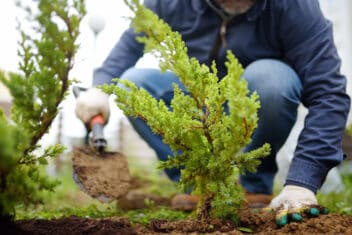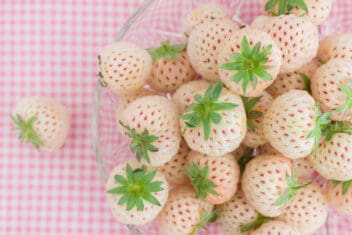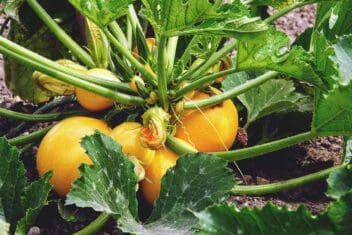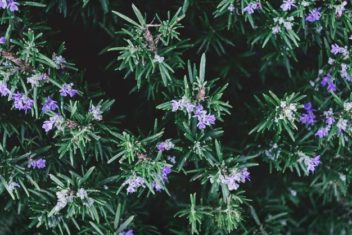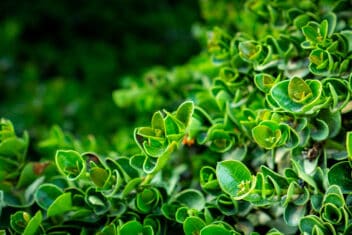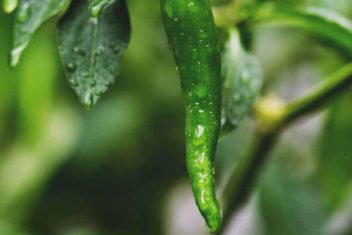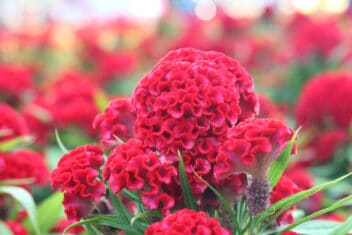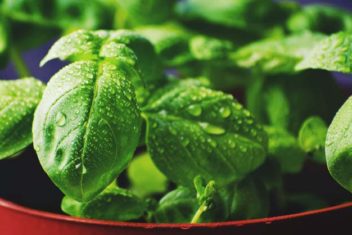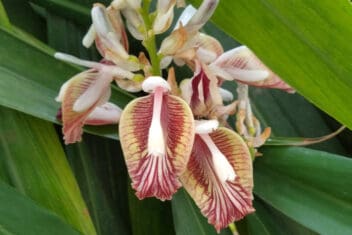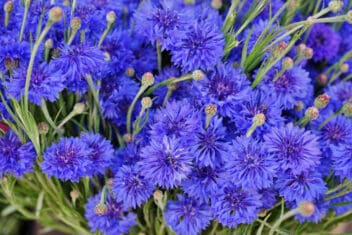I’m obsessed with growing plants that I can use to brew healthy and delicious teas. Calendula (Calendula officinalis) fits the bill and more. If you haven’t discovered the magic of growing this pretty herb, it’s time you got acquainted.
Not only can you make a tasty tea with it, calendula, sometimes referred to as pot marigold, is useful in the kitchen. In the past, it was used for coloring in butter and cheese. These days, I use it fresh in summer salads and dried in winter stews as a substitute for saffron.
It’s also a powerhouse of healing properties, which is why you’ll often find calendula in things like diaper cream and beauty products. It’s thought to stimulate your immune system, to be good for your skin, and to help with muscle twitches, and lots more. It also has antibacterial and antimicrobial properties and is used in some insect repellants.
From fungal issues on the feet to an itchy scalp, calendula is beneficial from your top to bottom. In addition to all of that, calendula looks beautiful in the garden, especially when the yellow and orange hues of the petals glow in the sun. There’s really no reason not to give this wonderful and useful flower a try.
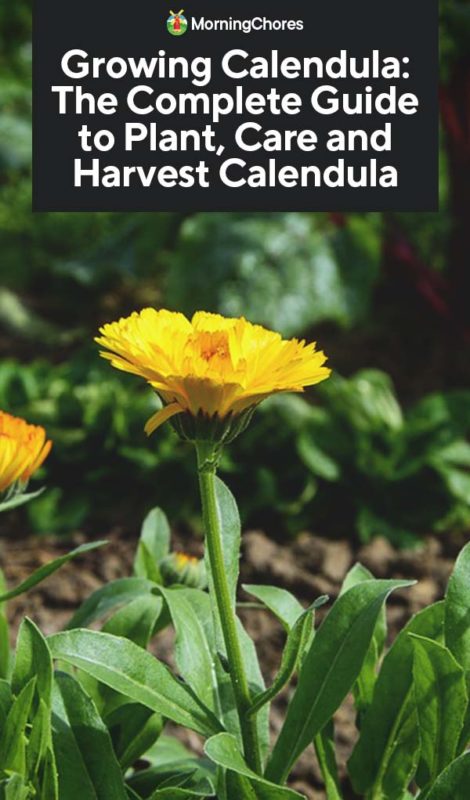
Calendula Plant Info
- Hardiness Zones: 2, 3, 4, 5, 6, 7, 8, 9, 10
- Soil: Sandy loam, PH between 5.5 and 7.0, well-drained, fertile, rich in organic matter
- Sun Exposure: Full sun, partial sun
- Planting:
- Start Indoors: 6 to 8 weeks before the last frost date
- Hardening Off: At least 1 week before transplanting
- Transplant Outdoors: When the plants are 3 to 4 inches tall and show first leaves
- Spacing: 8 to 12 inches between plants and 18 inches between rows
- Depth: ¼ to ½ inch seed depth
- Best Companions: Cucumber, tomato, peas, carrot, asparagus, radish, parsley, thyme
- Worst Companions: Sage, potato
- Watering: Water the plants during dry periods, once or twice per week
- Fertilizing: Apply a thin layer of compost in midsummer
- Common Problems: Aphids, whiteflies, blister beetles, tarnished plant bugs, powdery mildew, gray mold, root rot, leaf spot, smut, stem rot, aster yellows, mosaic, foliar nematodes, twospotted spider mites, thistle butterfly
Calendula Varieties

It is important to note that pot marigold (calendula) is different than ornamental marigold – the latter of which doesn’t have the same medicinal uses and benefits.
I normally plant a standard yellow and orange variety, like citrus cocktail, but there are many more options available, so check with your local supplier.
- Pink Surprise – golden yellow petals with an occasional pink edging.
- Neon – Comes in a variety of colors and has a double layer of petals.
- Bronzed Beauty – tall stems with cream and peach-colored flowers. I’ve planted this variety to use as cut flowers due to the long stem.
- Dwarf Gem – Great for pots because it’s compact. Bright orange, yellow and apricot double petal flowers.
- Citrus Cocktail – Another variety good for containers. This is a small plant with orange and yellow flowers.
- Greenheart Orange- Orange petals surrounding a big green center. This is quite a unique-looking plant.
- Touch of Red – Red tipped petals with a mixture of red and orange flowers.
- Radio Extra – This is a taller than normal calendula. It has big orange flowers reminiscent of a cactus shape.
How to Plant Calendula

Zones
If you live in a warmer climate you can plant calendula as a perennial. In cooler climates, consider it an annual in both the garden and in pots. Calendula grows well in zones 2 to 11.
Sun Requirements
In cooler areas give calendula full sun. If you live in an area that gets very hot, allow for partial shade because although calendula is hardy, very hot sun causes it to struggle.
Soil Requirements
Calendula is pretty forgiving of most soil types, but if you want to give it the best shot, plant in well-draining soil with plenty of rich organic matter. If the soil becomes waterlogged, the roots are likely to rot. Calendula needs a pH of 6 to 7.
When to Plant Calendula

Plant in spring. Calendula seeds are reasonably cold tolerant so I get them in the ground about two weeks before the last frost is predicted. If you plant calendula too late in the season when the temperatures are a lot warmer, the plant tends to be weaker.
You can use that to your advantage and plant in spring for bigger flowers, then plant in early summer for late blossoms. Just remember, the late blooms will be smaller with weaker plants.
Indoors, plant 6-8 weeks before the last frost date. If you plant seedlings, make sure the risk of frost is over before transplanting as the young plants are frost tender. Transplant when plants are about 3 inches tall and have a set of true leaves. Harden off for 1 week before putting in the ground.
Growing Calendula in Pots
As the name pot marigold suggests, calendula does well in containers. Given that calendula self-seeds vigorously, pots are a great idea if you don’t want to have flowers reappear in greater numbers each year.
Use a good quality potting mix, preferably with slow-release fertilizer included. Water frequently and give plenty of sunshine with filtered shade.
Spacing
Plants need about 12 inches between plants and 18 inches between rows.
How to Care for Calendula
Watering
Water well while the seedlings are establishing, but once the plants are mature, water once or twice a week. It’s easy to over-water calendula. I judge it by scraping away an inch of soil from the surface and if it’s dry, I water. If it’s still moist, I leave it alone.
Deadheading
Calendula will continue to bloom all season if you deadhead your plants. Basically, you need to pull the dying and dead blooms off the plant to encourage continuous blooming. You can also pinch or cut flowers off.
Fertilizing
Calendula shouldn’t need fertilizing if you plant into healthy, well-fed soil. If your soil doesn’t have a good amount of well-rotted organic matter, the calendula will need feeding with a good quality balanced liquid fertilizer halfway through the growing season.
Weeding
Keeps weeds under control to ensure good airflow between your calendula plants. Weeds poking through encourages disease and also takes away from the beautiful flowers.
Seed Saving
If you’re happy to have the calendula self seed for the following year, you don’t need to do anything other than allow it to go to seed and wait for them to fall to the ground.
You can save the seeds by taking the seed head and allowing it to completely dry before separating them and storing in a paper envelope for next year.
Common Problems and Solutions for Growing Calendula
Growing calendula is a relatively easy gardening task, but you may encounter a few issues.
Weak, Skinny Stalks
If your plants have weak stalks, it’s likely they had insufficient organic matter when planting. Feed with a good quality liquid fertilizer.
Powdery Mildew
This fungal disease appears as white spots on leaves. Calendula foliage can become quite thick, so ensure you have plenty of airflow between plants. This helps to prevent mildew. Use an anti-fungicidal spray, but if you’re going to use the calendula for tea, I suggest a homemade or organic spray.
Bacterial Leaf Spot
If you have this bacteria, you’ll see dark spots where the plant has necrotized. You can also get brown spots with yellow edging or black wilted edges of leaves. This is caused by tiny little organisms that reproduce in wet, cool garden conditions. Often they spread by water droplets splashing on leaves, particularly from soil.
The best form of defense is prevention. Don’t overwater, water only the roots, not the leaves, and allow for plenty of airflow between plants in healthy soil. I always remove the plants that get this disease and burn or throw the foliage away. You could remove affected foliage the moment you see them, but often once it’s there, it’s all downhill for the plant.
Aphids

I don’t think there’s any plant that aphids won’t attack. They suck the life from the plant, leaving honeydew behind, causing fungal growth which will affect the vitality of your calendula.
Use insecticide or neem oil to control aphids. Some gardeners who grow calendula to lure aphids away from their vegetable crops.
Whiteflies
Whiteflies suck the sap from plants and cause visible damage to flowers. I’ve found the best way to control whiteflies is to use organic pyrethrum.
Blister Beetle

Blister beetles eat any and all parts of calendula and can cause extensive damage. Again, pyrethrum or neem oil are my choice for controlling this pest. Always wear gloves before handling the adults because they can secrete toxic agent that will cause blisters.
Companion Plants for Calendula
Calendula grows well with:
- Chard
- Lettuce
- Tomato
- Carrot
- Thyme
- Parsley
- Cucumber
- Peas
- Asparagus
- Radish
Don’t plant calendula with:
- Sage
- Potato
How to Harvest and Use Calendula
A healing tea is my main reason for growing calendula. You can dry the whole flower if you wish, but I prefer to pick the flower and remove and dry the petals only.
Store in a glass jar once all moisture is gone. I use a dehydrator, but you can also leave to dry in a warm room.
The taste is similar to chamomile tea, and a slice of lemon and a little honey makes it very palatable.
The tea is said to be good for:
- Healing urinary tract infections
- Soothing sore throats
- Helping with digestion
- Easing the pain of stomach ulcers
- Spraying on skin irritations like rashes
- Face wash for acne
- Regulate menstruation
- Soak for fungal infections of the foot
You can make calendula oil for use in soaps, balms, and creams. In the kitchen, use it where you would saffron, or use it fresh in salads.
It’s also good for your garden soil and on top of all of that, it brightens up any flower bed or vegetable patch. Left to its own devices, it will also return year after year with minimal effort on your part.
When calendula dies off at the end of the season, I simply dig it into the soil as a natural fertilizer.
I hope you give growing calendula a try, and I’d love to hear all about your success and how you use this amazing plant.


